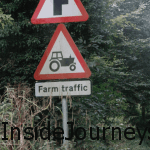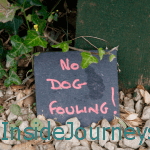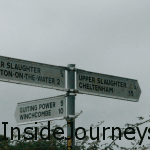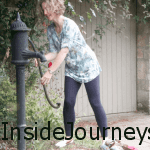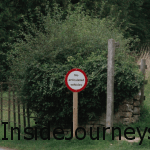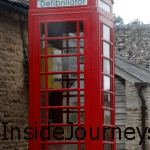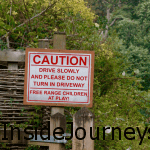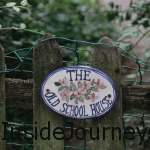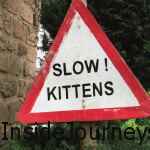Leaving Chastleton House, we drove directly to the Secret Cottage, which is about 5 minutes away. Built in 1580, the cottage has the typical thatched roof, with kitchen and living room downstairs, and sleeping quarters upstairs.

When we arrived, we were greeted with a colorful spread of scones, clotted cream, cookies, jams, coffee and tea.
With its crackling fire (sorry, no pics of the fireplace or the family’s living space), the cottage felt so cozy, I could have been tempted to stay but we had a full itinerary. Leaving the cottage, we stopped to admire Becky’s garden with its beautiful blooms. (Wish I knew more about flowering plants.)


I took a few shots of the flowers but I was most interested in the thatched roof. According to Robin, our driver, the roof is made from Norfolk or water reed and costs approximately £30,000 (about $45,000).

The reed, which is waterproof, is cut, dried and installed in layers. Once installed, the roof keeps the home warm in winter and cool in summer. I was surprised to hear that these roofs can last about 50 years. The ridge, however, must be replaced every 20 years. (Wonder how long a conventional roof lasts?)
Upper Oddington
Our next stop was the village of Lower Oddington, a preserved area with no new buildings.
The two villages, Upper and Lower Oddington, have about 400 residents. We exchanged waves and hellos to a few of them as we left the car.
Adlestrop
Next was Adlestrop, a pretty little village of about 120 people. Adlestrop has a post office and a church, St. Mary Magdalene.
The poet, Edward Thomas (1878-1917) wrote a poem around 1912 which celebrated its beauty. Sadly, Thomas died in WWI, 5 years after the poem was published.

Jane Austen stayed at Adlestrop House, which was then the rectory where her mother’s cousin, the Rev. Thomas Leigh, lived. Adlestrop House was Austen’s inspiration for her novel, Mansfield Park.



Great Tew
When Mr. Boulton, the owner of the manor house died in 1914, he didn’t leave an heir. Fifty years later, they found someone to assume ownership but in the intervening years, many of the cottages fell into disrepair, some swallowed by thick vegetation.

Robin said that the new lord sold two of the paintings from the manor and got enough to renovate. Of 100 cottages, 80 are thatched, 90 are owned by the manor.


Approximately 150 people live in the village, which has a pub, the Falkland Arms.
The Rollright Stones
Near Chippen Norton, Robin slowed and pointed to the location of the Rollright Stones, a monument about the same age as Stonehenge. The Rollright Stones further establishes that this type of monument construction was common in prehistoric Britain.
Cotswolds Dry Stone Walls
Dry stone walls, like these are an enduring feature of the Cotswolds. Surprisingly, they are made without mortar or cement and can last for many years with little attention.


Bourton-On-The Water
We drove through this picturesque town that is large enough (approximately 3,000 people live there) to accommodate tour buses, hence it receives lots of visitors. Bourton-On-The-Water is located on the River Windrush.
Upper and Lower Slaughter
Upper and Lower Slaughter (from the Old English word, Slohtre, which means muddy place) are two pretty villages located on the River Eye. Upper Slaughter is called a “sainted village” because it lost no one in WWI. `

Lower Slaughter has a waterwheel, and an old mill which has been converted into a tea shop and store. Although it is located near Bourton-On-The-Water, because of the narrow streets to the village, Lower Slaughter isn’t accessible to large tour buses.
Approximately 170 people live in Upper Slaughter, 200 in Lower Slaughter.
We also drove through the villages of Wyck Rissenton and Cornwell before returning to Secret Cottage for coffee and tea. Robin took us back to the train station at Merton-in-Marsh in time to catch the train to London.
Some Old English Words and Meaning
Chest, Shire – fortified settlement.
Chipping, from ‘cheapen’ – market.
City – has a cathedral.
Comb or Combe – valley.
Cots – sheep.
Dovecot or dovecote – a place for doves and pigeons. The scrapings are collected and used to fertilize the fields. Its size is usually a sign of the wealth of the landowner.
Ford, as in Oxford – a way across a river.
Ham, e.g., Cheltenham – a settlement.
Slaughter, e.g., Upper Slaughter – from Slohtre meaning a marshy, muddy area.
Staddle stones – used to prop up graneries to keep the rats out.
Ton, e.g., Oddington – an enclosure.
Town – a community of 1,000 people or more.
Wold, Wolde – a hill.
Some Famous Residents of The Cotswolds
David Cameron, PM
Kate Winslet
Hugh Grant
Patrick Stewart
Kate Moss
Secret Cottage Tour Details
6-hour guided tour of select Northern Cotswolds villages, tea, coffee, pastries, buffet lunch, and traditional cream tea – £85 or US122. For more info, check out the Secret Cottage site. Enjoy!
Linking this week with Travel Photo Thursday, which is organized by Nancie at Budget Travelers Sandbox, Jan at Budget Travel Talk, Ruth at Tanama Tales and Rachel at Rachel’s Ruminations.






